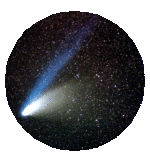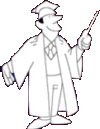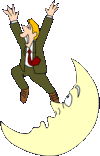

|
I suppose I've always been interested in Astronomy. As a young man I avidly followed the Apollo Moon missions. Around that time, on a canal boat trip across the then relatively un light polluted Pennines there was an incredible starry night. The next day I bought a decent pair of binoculars (10 x 50 wide angle) which I used for many years. But of course the rest of the holiday was cloudy! Nevertheless, I used to go out in the back garden on a fine night and have a look around. I read Science Fiction and magazine articles, and marvelled at the beauty and complexity of the Universe. The Moon was always worth a look, with my binoculars it was possible to see the cratering, although details were lacking. My first look at the Pleiades knocked my socks off! What was a nice little group of 6, occasionally 7 stars became a field of flaming beauties. And scanning the Milky Way area revealed countless pinpricks of light in an otherwise uneventful suburban sky. I was able to identify some of the better known constellations. But I didn't proceed any further for years. I knew of a few of the many beautiful deep sky objects, but hadn't seen any of them 'in the flesh', not even the Andromeda galaxy or the Orion nebula. You could say I had a 'passing interest'. I occasionally watched Patrick Moore's 'Sky at Night'. I enjoyed Lunar eclipses. I saw the moons of Jupiter. I think I found Halley's Comet. I didn't even know about comet Hyakutake. |
 |
 |
Then at the end of March 1997 along came comet Hale-Bopp. Unmissable. I drove out to a dark place and sat in my car with the binoculars steadied on the windowsill for a couple of hours. The comet filled the field of view in glorious colour. Once I got 'on the net' I downloaded numerous pictures taken by space probes and the Hubble Telescope. |
|
It was an
Orion
Optics
(England) Europa Newtonian Reflector. An 8" mirror, f6 focal
ratio. Here it is, set up to look at the Sun using eyepiece
projection. Note the mask on the front to prevent damage to
the eyepiece. This mask by the way was made from thin card
carefully selected and obtained at great expense and
personal sacrifice. British beer drinkers will understand
and sympathise! :-) |
|

|
Now I did the research I should have done in the first place. I visited numerous web sites, read dozens of reviews, and found there was a huge choice. I contacted the local Astronomy Society in South Shields,and found that a member lived only 5 minutes walk away from me! Paul Jenkins had been an astronomer most of his life, had a wealth of experience and a Celestron 8" SCT. What a revelation! Easy to handle, a smooth action, rock steady and portable. Paul showed me some of the most famous deep sky objects and helped me collimate my Europa. His help and encouragement have been invaluable to me - thanks, Paul. Now I was starting to find things. I still wasn't happy with the handling of the 'scope, but was undecided whether to spend more on what might not become a long term interest. |
|
Then I was returning home in the small hours of early July 1999 after a late night post concert party. What were those points of light in the clear pre dawn sky? By this time I was using the excellent Skymap Pro planetarium program, and a quick look confirmed that Jupiter and Saturn were rising. Set up the Europa. Jupiter with banding!! Saturn and rings!!! That was the clincher. I made a deal with the shop to return my Europa at a favourable price (I'd only had it for a couple of months) and ordered a C8 of my own. Thanks to Stan Smith of Saxons, Sunderland, for his help and cooperation. |
 |
Although the C8 was a very nice instrument, star hopping in my light polluted Boldon skies was not easy, so it wasn't long before I treated myself to a GOTO computerised LX90 telescope